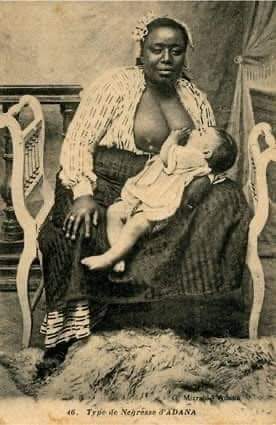
For Advert, Political Campaign Online Banner & Poster Display, Event Coverage, Sponsored Article/Story Publication, PR And Other Media Services:
Please, Send An Email To : citizennewsng@gmail.com
Slave Trade brought many advantages to western societies. The main duty of a slave was to work on plantations increasing productivity. Slaves often worked long tedious hours in the sun with no pay or reward for their hard labour.
Their presence made traders and plantation owners more productive and made their living conditions very harsh.
After a while, the duties of slaves extended to domestic work and female slaves became of high value.
In addition to their plantation duties, many female slaves were taken into the homes of their masters to serve their mistresses, cook, clean and wash for them. If a mistress had too many children, the domestic worker was made to help in caring for the child.
After a while, female slaves were made to take the place of low-class women paid to breastfeed babies, a practice known as wet nursing. By the 17th century, wet nursing by slaves had become very popular in E.urope. The practice soon reached America through B.ritish settlers.
The practice was an excuse for many w.hite mothers to avoid breastfeeding with hopes of maintaining their stature and avoiding the “messy” part of motherhood. The act was perceived as a self-demeaning and women who were seen breastfeeding were often thought of as uncultured, poor and often shunned. The practice became very popular when doctors of the time did all they could to prove that breastfeeding was an unhealthy act for women. It is believed that doctors were paid huge sums of money to write such reports.
The children of slaves grew healthy while many w.hite families lost their children to ill health. This made many westerners force slave mothers to breastfeed their w.hite children so that they could develop better and survive the early months of childhood.
By the 18th century, the trend had become very popular. Once a slave mother had a child, she was quickly assigned to a w.hite mistress and forced to breastfeed her w.hite baby instead of her own. Young and healthy slave women were also forced to breastfeed white babies after doctors discovered that the continuous sucking of a sexually active female breast could result in lactation.
While they breastfed white babies at the expense of theirs, slave mothers tried to keep their children alive by feeding them with concoctions they believed will be good substitutes for milk. They also gave cow milk and dirty water which were not suitable for b.abies health. This resulted in high d.eaths of babies of slaved throughout the slave trade. At the peak of the forced wet nursing, slave traders often ki.dnapped newborn babies from their slave mothers. The pain in the breasts left these women with no choice but to breastfeed other babies who were often white. Some reluctant slaves were beaten and often milked like cows to feed w.hite babies.
Slave mothers often kept the w.hite babies in their homes until the child’s family felt it was time to take them back. Since the living conditions of the slaves were not the best, several w.hite babies d.ied. Speculating that slave mothers were k.illing the babies out of spite.
they were later forced to move in with the family where they could be monitored. The enslaved wet nurses were rejected by their husbands especially after the death of their own child. Another consequence of the practice was slave masters and their sons having affairs with slave women resulting into increased births of mixed race babies. The practice started to die down after slaves were slowly getting their freedom. Most of the wet nurses were saved by their families or lovers who bought their freedom for them. ©Jacinta Okeke
For Advert, Political Campaign Online Banner & Poster Display, Event Coverage, Sponsored Article/Story Publication, PR And Other Media Services:
Please, Send An Email To : citizennewsng@gmail.com












